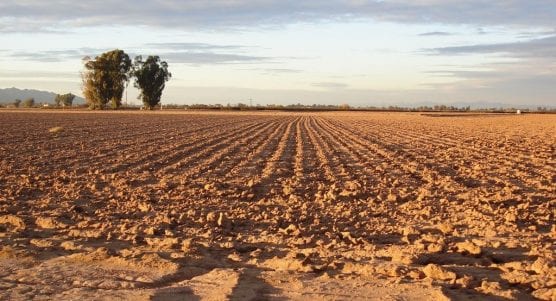By Nathan Solis
Heavy thunderstorms over the Indian Ocean might not mean much to the average Californian, but a study published Friday has uncovered a link between the storms and heat waves in the Golden State.
The study published Friday in the journal Advances in Atmospheric Sciences doesn’t specifically mention a butterfly effect and natural disasters, but does lay out a pattern of heat waves following tropical storms.
California’s Central Valley stretches 450 miles up the interior of the state, surrounded by the Sierra Nevada and Coast Ranges. The agricultural region produces much of the world’s citrus, nuts and dairy products. A July 2006 heat wave swept across the state, killing 17,000 cows – 1% of the state’s herd – and resulting in $1 billion in losses for the state’s dairy industry alone.
The Central Valley bore the brunt of that heat wave, which lasted nearly two weeks and killed 131 residents there. It also resulted in numerous temperature records, both daytime and nighttime.
Now scientists may have found a link half a world away. A new study from the University of California, Davis, and the Asia-Pacific Economic Cooperation Climate Center in Busan, South Korea, mapped out 31 years of heat wave data from the Central Valley and compared the data to heavy rainstorms across the Indian Ocean and the west-central Pacific Ocean.
Specifically, scientists followed the Madden-Julian Oscillation, an eastward-traveling disturbance of clouds, rainfall, winds and pressure that causes monsoons in West Africa. They found a pattern: Heavy rainfall in the tropics preceded each heat wave in California’s Central Valley.
In other words, strong tropical activity over the Indian Ocean likely means the Central Valley will see temperatures climb into the 100s between 4 and 16 days later.
“We know that such patterns in winter are sometimes linked with areas of the tropics where thunderstorms are enhanced; we wondered if there might be similar links during summer for those heat waves,” said study co-author Richard Grotjahn, a professor at UC Davis.
Study author Yun-Young Lee of the APEC Climate Center asked, “So, a question comes to mind: [is] hot weather in the Central California valley partly attributable to tropical rainfall?”
Chaos theory aside, the authors say there is a strong link – but only for heat waves that form in California. Bubbles of hot air from elsewhere that expand over California are less linked to the Madden-Julian Oscillation.
The information can help build simulations of future climate scenarios and link large-scale weather patterns and ultimately could help predict heat waves.
Like this:
Like Loading...
Related





 Tweet This
Tweet This Facebook
Facebook Digg This
Digg This Bookmark
Bookmark Stumble
Stumble RSS
RSS

























REAL NAMES ONLY: All posters must use their real individual or business name. This applies equally to Twitter account holders who use a nickname.
0 Comments
You can be the first one to leave a comment.